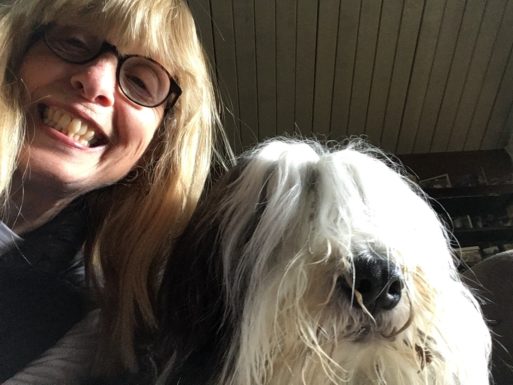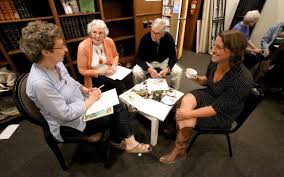
Susan M. Weisberg is a Licensed Clinical Social Worker who works as a hospice social worker in the South Bay area near San Francisco. In addition to her education and Social Work License, Susan received specialized training in end-of-life care at the Smith College of Social Work as well as a one-year Palliative Care Fellowship at the V.A. Hospital Hospice in Palo Alto. Her career spans 45 years of medical social work.
Editor’s Note: This interview has been edited for length and readability.
Melissa Gouty: Thank you, Susan, for telling us about hospice social work. You’ve been in the industry for more than 40 years. Can you talk about how things have changed from the “old days?”
Susan Weisberg: I love your term, “the old days.” It conjures up images of women in charity organizations at the turn of the 20th century, like Lillian Wald and Jane Addams!
One of my heroines was Dr. Cecily Saunders. She was a remarkable woman who started St. Christopher’s in London and developed the precursor of the modern community outreach program.
Melissa: Who were the modern people who influenced you?
Susan: When I first worked at Stanford, I worked with two wonderful people: Pat Fobair and Isabel Walker. They were my mentors. They are the two most fabulous social workers on this earth as far as I’m concerned. They created all these programs that no one else had.
You have to remember. There was no internet…no chat rooms for patients. We had a program called Coping Skills that would meet for six to seven weeks. The first class would be about cognitive-behavioral therapy. We taught relaxation techniques. We taught constructive thinking. We introduced people to all of these concepts that psychologists now talk about all over the internet, like mindfulness. It’s amazing.

Photo: ArtTherapy.co.za
We had groups for patients, and we organized and developed a newsletter. We had 5,000 people in America who received it. We hired patients to work on the newsletter. One of our wonderful patients became an art therapist, and she would do art with our patients, and it morphed into music therapy.
I had a boutique. (Now we have a gorgeous boutique at Stanford that’s run by volunteers.) But back then, I did cosmetic things with patients. I had wigs. I had prostheses in my closet. I had a closet full of everything. I look back now, and I’m sure I didn’t do a very good job. You know what they say, “Jack of all trades, master of none?” Now, there are entire staffs of people who do what I used to do.
Melissa: Has the approach to talking about terminal diagnoses and impending death changed over the years?
Susan: Early on in my career, there was sort of a conspiracy of silence. This was before the patient self-determination act. You know, doctors were paternalistic, and patients were willing to be paternalized. The world has changed. That’s the beauty, I think, of being in a profession so long. You get to see the changes. Now you walk into a clinic and people are sitting there reading their own charts. When I started, the charts were never in the hands of the patient. It’s cool to see that kind of shift.
But on the other hand, the other side, now people are saying that the doctor presents too many options: “Well, you could do this, or that, or that,” and the patient says, “I do not have any idea what to do because I didn’t go to medical school. I do not know what’s best for me.”
Melissa: What kind of training did you get on how to address the concerns of people who are trying to decide what kind of treatment to pursue at the end of their lives?

Dr. James Hallenbeck
Credit: med.stanford.edu
Susan: After I did my stint at Smith college, I went to the V.A. in Palo Alto, at their in-patient hospice. It was a professional, one-year fellowship, and it was wonderful. They had three palliative care MDs who were young. They had a chaplain, a psychologist, and me. The doctors were incredible because they were being trained by this wonderful doctor named James Hallenbeck.
Melissa: What was so wonderful about Dr. Hallenbeck?
Susan: The way he approached death and hospice care. He went towards pain and fear instead of backing off. He talked about fear with people. He would just sit down on the bed if the patient would allow him to, and he would talk to them about their disease in a candid, loving, kind way that would lead the conversation to “What would you like us to do for you?” “How would you like to be treated?”
I had the privilege of seeing this approach in action and learning from it. Then I felt courageous enough to do that myself. I tell you, it’s just like opening up the windows in a closed room. I’ve been blessed to be around such wonderful teachers, and I’m still learning. I believe in life-long learning. It never stops.
Melissa: What’s the hardest part of your job?
Susan: Feeling that sense of helplessness when it’s a long-term dementia decline, and helping adult children get in touch with that part of the parent that’s no longer there. The dementia deaths are the most heart-wrenching for me because the person dies twice: First, the identity dies, and then the body dies.
The other part that I think about at night in bed is that we do not have enough places for people who are alone to go to. We have to send them to nursing homes. I’m not against nursing homes, but we had a lot of hospice houses during the AIDS epidemic, and so many of them are disappearing.
Melissa: When you go into someone who has just had a terminal diagnosis, or who has to make that decision about how to deal with the end, what advice do you give them?
Susan: I do not give advice unless asked. I basically ask questions: “Tell us about you as a person.” Things like, “How can we give you the best treatment now that curative options are gone?” “How do you want us to be with you?” “How often do you want us to come?” “Are there people in your life that you’re worried about that we can counsel?” “Are there business matters in your life that are unsettled?” “How can we work to make you be more at peace with the end of your life?”
It can be a time where people can flourish if they are willing to make connections with us. We have wonderful chaplains who are non-denominational. They are more spiritual. They can help people take a load off their minds.
Melissa: What attitudinal shifts have you seen over the years?

Photo: Tuscon.com
Susan: I think the attitude toward death is getting better. You know, now they even have these things called Death Cafes, and they’ve taken off like wildfire. People are talking about advance directives when they’re in their 20s and 30s. You know when you start to practice something that’s difficult to talk about, it becomes easier, right?
Melissa: Yes. Exactly.
Susan: Your mom’s generation, my mom’s generation. Nobody ever talked about death. We had to steal my mother’s medical chart. It’s unbelievable. It’s amazing how we were shrouded in secrecy. It’s crazy. That wasn’t healthy.
Melissa: That’s the whole idea of SevenPonds and other places like us. They are changing the playing field.
Susan: It’s wonderful. Now people know about advance directives, instead of the “Do Everything or Nothing” philosophy. Then Five Wishes was created, and Compassion & Choices, and some of the things that pre-dated advance directives.
We’ve seen a revolution. The beautiful thing is now that you can read it. You can save it. You can go back to it. You can talk about it with others. Most people make their own decisions, and that’s really okay. I think not making people feel bad about their choices is important.
You’re going to do it differently. I’m going to do it differently. All we can do is make the determination that we’re going to do it OUR way, which may be very different from what previous generations did.
Melissa: Susan, it has been a pleasure for me to learn more about hospice social work and the work you’ve done over the years. Thank you for your time and insights.
Susan: You’re welcome.
If you missed part one of our interview the Susan M. Weisberg, please catch up here.

 How Has Hospice Social Work Changed Over the Years?
How Has Hospice Social Work Changed Over the Years?


 Recovering Cremation Remains After the Los Angeles Fires
Recovering Cremation Remains After the Los Angeles Fires
 “As Tears Go By” by Marianne Faithfull
“As Tears Go By” by Marianne Faithfull
 “The Sea” by John Banville
“The Sea” by John Banville














